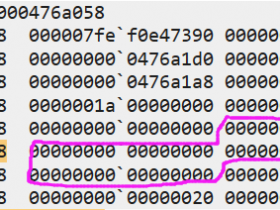- A+
写在前面
1、源码(.Net Core 2.2)
git地址:https://github.com/yizhaoxian/CoreIdentityServer4Demo.git
2、相关章节
2.1、《IdentityServer4 (1) 客户端授权模式》
2.2、《IdentityServer4 (2) 密码授权》
2.3、《IdentityServer4 (3) 授权码模式(Authorization Code)》
2.4、《IdentityServer4 (4) 静默刷新(Implicit)》
2.5、《IdentityServer4 (5) 混合模式(Hybrid)》
3、参考资料
IdentityServer4 中文文档 http://www.identityserver.com.cn/
IdentityServer4 英文文档 https://identityserver4.readthedocs.io/en/latest/
4、流程图
客户端授权模式是最基本的使用场景,我们需要做一个API(受保护的资源),一个客户端(访问的应用),一个IdentityServer(用来授权)

一、创建IdentityServer
1、用VS创建一个Web 项目

2、添加引用 IdentityServer4 包,下图是我已经安装好了的截图

3、添加一个配置文件(这里也可以使用json文件)
public class IdpConfig { /// <summary> /// 用户认证信息 /// </summary> /// <returns></returns> public static IEnumerable<IdentityResource> GetApiResources() { return new List<IdentityResource> { new IdentityResources.OpenId(), new IdentityResources.Profile(), new IdentityResources.Address(), new IdentityResources.Email(), new IdentityResources.Phone() }; } /// <summary> /// API 资源 /// </summary> /// <returns></returns> public static IEnumerable<ApiResource> GetApis() { return new List<ApiResource> { new ApiResource("api1", "My API") }; } /// <summary> /// 客户端应用 /// </summary> /// <returns></returns> public static IEnumerable<Client> GetClients() { return new List<Client> { new Client { // 客户端ID 这个很重要 ClientId = "client", //AccessToken 过期时间,默认3600秒,注意这里直接设置5秒过期是不管用的,解决方案继续看下面 API资源添加JWT //AccessTokenLifetime=5, // 没有交互性用户,使用 clientid/secret 实现认证。 AllowedGrantTypes = GrantTypes.ClientCredentials, // 用于认证的密码 ClientSecrets = { new Secret("secret".Sha256()) }, // 客户端有权访问的范围(Scopes) AllowedScopes = { "api1" } } }; } }
4、在StartUp.cs 里注册 IdentityServer4
ConfigureServices()
services.AddIdentityServer(options => { options.Events.RaiseErrorEvents = true; options.Events.RaiseInformationEvents = true; options.Events.RaiseFailureEvents = true; options.Events.RaiseSuccessEvents = true; }) .AddDeveloperSigningCredential()//解决Keyset is missing 错误 //.AddTestUsers(TestUsers.Users) //.AddInMemoryIdentityResources(IdpConfig.GetApiResources()) .AddInMemoryApiResources(IdpConfig.GetApis()) .AddInMemoryClients(IdpConfig.GetClients());
Configure()方法添加使用 IdentityServer4 中间件
app.UseIdentityServer();
5、配置完成
启动项目,访问 http://localhost:5002/.well-known/openid-configuration (我的端口号是5002) ,可以浏览 发现文档,参考下图,说明已经配置成功。
后面客户端会使用里面的数据进行请求toke
项目第一次启动根目录也会生成一个文件 tempkey.rsa

二、客户端
1、新建一个.Net Core Web 项目
这里可以使用其他建立客户端 。例如:控制台程序、wpf 等等。需要添加 NuGet 包 IdentityModel

2、新建一个 Controller 用来测试访问上面的IdentityServer
获取token,访问 http://localhost:5003/Idp/token ,提示访问成功
public class IdpController : Controller { private static readonly string _idpBaseUrl = "http://localhost:5002"; public async Task<IActionResult> Token() { var client = new HttpClient(); var disco = await client.GetDiscoveryDocumentAsync(_idpBaseUrl); if (disco.IsError) { return Content("获取发现文档失败。error:" + disco.Error); } var token = await client.RequestClientCredentialsTokenAsync(new ClientCredentialsTokenRequest() { Address = disco.TokenEndpoint, //ClientId、ClientSecret、Scope 这里要和 API 里定义的Client一模一样 ClientId = "client", ClientSecret = "secret", Scope = "api1" }); if (token.IsError) { return Content("获取 AccessToken 失败。error:" + disco.Error); } return Content("获取 AccessToken 成功。Token:" + token.AccessToken); } }

三、添加API资源
1、新建一个API项目
我把API项目和IdentityServer 放到同一个解决方案,这个自己定,无所谓的
API资源指的是IdentityServer IdpConfig.GetApis() 里面添加的 api1(这个api1名称随便起,但是要注意一定要保持一致)
添加认证之后就可以测试用 AccessToken 请求资源了
2、添加JWT 认证
StartUp.ConfigureServices()
services.AddAuthentication(JwtBearerDefaults.AuthenticationScheme) .AddJwtBearer(JwtBearerDefaults.AuthenticationScheme, options => { // IdentityServer 地址 options.Authority = "http://localhost:5002"; //不需要https options.RequireHttpsMetadata = false; //这里要和 IdentityServer 定义的 api1 保持一致 options.Audience = "api1"; //token 默认容忍5分钟过期时间偏移,这里设置为0, //这里就是为什么定义客户端设置了过期时间为5秒,过期后仍可以访问数据 options.TokenValidationParameters.ClockSkew = TimeSpan.Zero; options.Events = new JwtBearerEvents { //AccessToken 验证失败 OnChallenge = op => { //跳过所有默认操作 op.HandleResponse(); //下面是自定义返回消息 //op.Response.Headers.Add("token", "401"); op.Response.ContentType = "application/json"; op.Response.StatusCode = StatusCodes.Status401Unauthorized; op.Response.WriteAsync(JsonConvert.SerializeObject(new { status = StatusCodes.Status401Unauthorized, msg = "token无效" })); return Task.CompletedTask; } }; });
3、添加认证中间件
//这里注意 一定要在 UseMvc前面,顺序不可改变 app.UseAuthentication();
4、Controller 添加特性认证 [Authorize]
[Route("api/[controller]")] [Authorize] public class SuiBianController : Controller { [HttpGet] public string Get() { var roles = User.Claims.Where(l => l.Type == ClaimTypes.Role); return "访问成功,当前用户角色 " + string.Join(',', roles.Select(l => l.Value)); } }
5、测试
访问 http://localhost:5001/api/suibian ,提示 token 无效,证明我们增加认证成功

四、客户端测试
1、修改 IdpController, 添加一个action 访问 API资源 /api/suibian
public class IdpController : Controller { //内存缓存 需要提前注册 services.AddMemoryCache(); private IMemoryCache _memoryCache; private static readonly string _idpBaseUrl = "http://localhost:5002"; private static readonly string _apiBaseUrl = "http://localhost:5001"; public IdpController(IMemoryCache memoryCache) { _memoryCache = memoryCache; } public async Task<IActionResult> Token() { var client = new HttpClient(); var disco = await client.GetDiscoveryDocumentAsync(_idpBaseUrl); if (disco.IsError) { return Content("获取发现文档失败。error:" + disco.Error); } var token = await client.RequestClientCredentialsTokenAsync(new ClientCredentialsTokenRequest() { Address = disco.TokenEndpoint, ClientId = "client", ClientSecret = "secret", Scope = "api1" }); if (token.IsError) { return Content("获取 AccessToken 失败。error:" + disco.Error); } //将token 临时存储到 缓存中 _memoryCache.Set("AccessToken", token.AccessToken); return Content("获取 AccessToken 成功。Token:" + token.AccessToken); } public async Task<IActionResult> SuiBian() { string token, apiurl = GetApiUrl("suibian"); _memoryCache.TryGetValue("AccessToken", out token); if (string.IsNullOrEmpty(token)) { return Content("token is null"); } var client = new HttpClient(); client.SetBearerToken(token); var response = await client.GetAsync(apiurl); var result = await response.Content.ReadAsStringAsync(); if (!response.IsSuccessStatusCode) { _memoryCache.Remove("AccessToken"); return Content($"获取 {apiurl} 失败。StatusCode:{response.StatusCode} rn Token:{token} rn result:{result}"); } return Json(new { code = response.StatusCode, data = result }); } private string GetApiUrl(string address) { return _apiBaseUrl + "/api/" + address; } }
2、请求 AccessToken
http://localhost:5003/Idp/token ,请求成功后会将 token 存储到 cache 中

3、请求 API 资源
http://localhost:5003/Idp/suibian ,token是直接在缓存里面取出来的

五、项目目录





